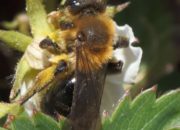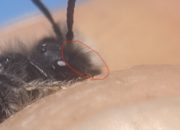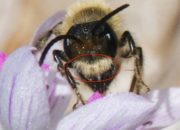This subgenus is widespread and relatively conspicuous from early spring through early summer. As a group they are relatively distinctive though only a couple species are regularly identifiable from photographs
Identification: Females are larger than other Mining Bees and are often mistaken for small Bumble Bees. They all have black abdomens and a hairy thorax that varies from pale yellow to bright orange. Males are similar to many other Mining Bees, though with experience can be recognized by their large angular heads and thick “mustache” across their lower face.
Similar Species
Bumble Bees (genus Bombus): Small worker bumble bees are hairy and can be a similar size to Melandrena females. All worker bumble bees in Vermont have at least some yellow hair on their abdomen, unlike Melandrena.
Clark’s Mining Bee (Andrena clarkella): This willow specialist is large with a similar hair pattern, but unlike Melandrena females, Clark’s Mining Bees have bright orange scopal hairs on their tibia.
Species Accounts
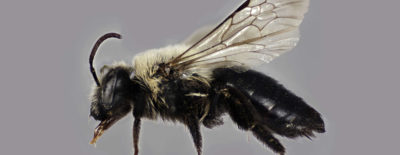
Carlin's Mining Bee (Andrena carlini)
Probably the most common member of this subgenus. Females are hard to distinguish from the less common Regular Mining Bee.
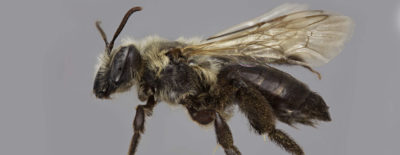
Neighborly Mining Bee (Andrena vicina)
This large species can often be recognized by its long face, protruding clypeus, and orange-tinged hair.
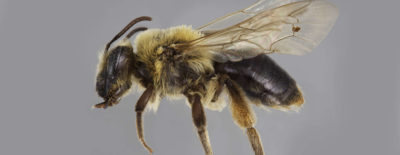
Dunning's Mining Bee (Andrena dunningi)
This species can appear shockingly orange on the thorax, though faded specimens overlap with other species in the subgenus.
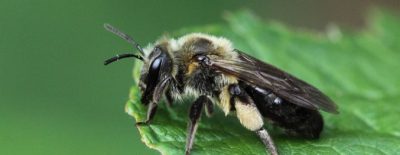
Snowy Mining Bee (Andrena nivalis)
A relatively nondescript northern and western species. Image Courtesy Michael Veit
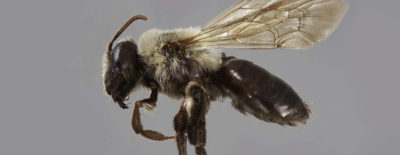
Regular Mining Bee (Andrena regularis)
Females are similar to Carlin's Mining Bee, though usually with more pale hairs on the side of the thorax. Less common and more northern than Carlin's.
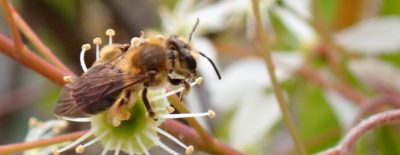
Cherry Mining Bee (Andrena pruni)
VT records of this species so far are limited to the southern Champlain Valley. Both sexes can occasionally be identified from photos. Image Courtesy Laura Shappell.
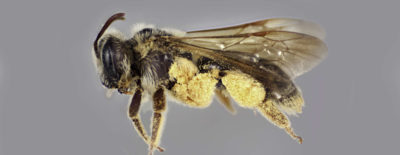
Advantaged Miner Bee (Andrena commoda)
A localized and uncommon species in Vermont, unlikely to be identified from photos.
Distribution:
To see the global distribution, check out the iNaturalist account, and toggle the GBIF layer on the map.
Unless otherwise specified, photos in the grid are courtesy of Margarita Miklasevskaja at PCYU with funding from NSERC-CANPOLIN.
